2014 Trek Remedy 9 29
(discontinued)
| Where To Buy | |||
|---|---|---|---|
Free standard shipping on all bikes (continental U.S. only).
Flat rate shipping to Hawaii and Alaska. |
Free standard shipping on all bikes (continental U.S. only).
Flat rate shipping to Hawaii and Alaska. $20.99
|
||
Trek Remedy 29 Rocker Link
$229.99
|
|||
Free shipping on orders over $50 (continental U.S. only).
International shipping available. Some exclusions apply. |
|||
Free shipping on orders over $50 (continental U.S. only).
International shipping available. Some exclusions apply. |
|||
Review by Joel Harwood // Photos by AJ Barlas and Brad Martyn
The Trek Remedy 9 29 is promoted as Trek's "ultimate technical trail bike." What better place to put that statement to the test than the Coast Mountains of British Columbia?
With all of the hoopla around the word "enduro," bike manufacturers are doing their best to claim their share of the market. Truthfully, bike companies have been building enduro bikes for quite some time, but that's neither here nor there. The 2014 Remedy 9 29 is Trek's first foray into the segment using a 29-inch wheel platform.
I have to admit that I'm not very well versed in the battle of the wheel sizes. I've never even ridden a bike with 27.5-inch (650b) wheels and the 29-inch equipped bikes I had previously ridden didn't really knock my socks off. So, when I got my hands on the new Remedy 9 29, I told myself that I would give it a fair shake and adjust to the new ride.

Remedy 9 29 Highlights
- Alpha Platinum Aluminum frame
- 29-inch wheels
- 140mm (5.5-inches) of rear wheel travel
- Angleset compatible E2 tapered head tube
- 67.5 or 68.2-degree head angle
- 68 or 69-degree seat tube angle
- 13.8 or 14.1-inch bottom bracket height
- 17.5 or 17.4-inch chainstays
- PressFit bottom bracket shell
- 142mm rear spacing with 12mm through axle
- Colors: Polished Aluminum or Trek Black
- Weight: 30.7-pounds (13.9kg)
- MSRP: $4,729.99 USD
The Remedy 9 29 features just about every piece of technology that Trek has going. Most notably is the FOX Dual Rate Control Valve (DRCV) shock, which is essentially Trek's way of combining the best attributes of a low and high volume air cans into one shock. Internally, two chambers work in harmony to allow solid pedaling performance and big hit sure-footedness. The bike also features Trek’s Full Floater suspension design. In this system the shock is mounted to two moving linkage points, which, according to Trek, allows the rear end to better respond to a wide variety of terrain. Finally, the Active Braking Pivot (ABP) is designed to negate the braking forces on the rear end and keeps the rear wheel tracking smoothly regardless of braking forces.

Additional details include the one piece magnesium EVO rocker link, Mino Link flip chip for geometry adjustments, internal derailleur and dropper post routing, ISCG 05 mounts, direct mount front derailleur, post mount disc brake, and an integrated down tube guard to protect from stray rock strikes.
No single feature of Trek's frame construction stands head and shoulders above the rest, however in combination they create an efficiently designed package.
On The Trail
Squamish, BC sits smack dab in the middle of Vancouver's North Shore and the Whistler Bike Park. The area boasts an impressive trail network that features everything from low-speed rock slabs and tight corners to wide-open root smashing and machine built berms. Given the variety the area has to offer, it served as the perfect place to test out this new rig. The bike was also used in the Crankworx Enduro World Series race, just for good measure.

The geometry is adjustable via the Mino Link flip chips in the seatstay, however once I got my hands on the bike I promptly swapped the geometry to the slack, low, and long setting and left it there for the duration of the test. In the "Low" setting the bike has a 67.5-degree head angle, 13.78-inch bottom bracket height, 17.52-inch chainstays, and 68-degree seat tube angle. In this position, I never had issues with the front end wandering on climbs, never struck a pedal, and I sure appreciated the added stability when things pointed downhill.
Being a long-travel 29er, the Remedy 29 seemed most in its element when the terrain got downright nasty. At speed it gobbled up whatever was in front of it and encouraged high-lines and gaps rather than quick line swaps. I was somewhat apprehensive that it wouldn't handle as well in the air as a 26-inch bike, however I found it to be quite stable. While it wasn't as playful or responsive as some rigs, I did find that the aggressive geometry, plush suspension, and 29-inch hoops allowed me to really push the bike on DH sections.
The ideal suspension setting on the FOX Float CTD (Climb, Trail Descend) suspension seemed to be the middle Trail setting, front and rear, with fairly fast rebound to keep the wheels tracking when the pace picked up. Regardless of Trail or Descend setting, the DRCV shock offers a forgiving ride. It allows for excellent small bump compliance and it handles square edge hits with tact. If I were to describe the suspension in a word, it would be "supple." The Descend setting offered marginally improved sensitivity in the DRCV shock, however I found that I blew through the travel too quickly, especially on drops and g-outs. Thankfully Trek now offers spacer kits to tune the progressivity of the rear shock, which is something I'd highly recommend looking into if you're an aggressive rider.

Regardless of my best effort to exceed the bike's capability, it handled just about everything in its stride. I was able to pack in the suspension a few times when riding through wheel eating brake bumps, but many downhill bikes suffer the same fate, never mind a trail bike. The suspension performed flawlessly most of the time so there's no massive improvement necessary, it's just worth noting.
The active suspension did make for a little more work on straightforward fitness climbs and while sprinting. Fortunately, the Climb setting of the shock stiffened things up significantly and allowed the bike to climb much more efficiently with far less pedal bob. The shock is positioned well and compression settings are easily accessible on the fly.
Pointed uphill on roads and buff climbs, the Remedy 29 felt somewhat heavier than comparable bikes I've ridden. I would also hesitate to call the bike snappy from a standstill or out of corners. It seemed to favor a smooth riding style that maintains momentum rather than one that relies on abrupt accelerations. The geometry was solid on climbs with the shock in Climb mode, but in the Trail and Descend settings I felt that the seat tube was a little on the slack side for my taste.
Regardless of a slightly sluggish feel, I was still able to push a 34-tooth chainring with a 11-36 cassette for the duration of the test. The bike showed no odd pedaling characteristics in this configuration.

Build Kit
The Remedy 9 29 features a solid mix of FOX, Bontrager, Shimano, and RockShox parts. Standouts include the FOX Factory 34mm fork with Kashima coating, Bontrager Rhythm Elite tubeless ready wheels, Shimano XT Shadow Plus drivetrain and brakes, as well as the RockShox Reverb Stealth dropper post.
I did make a few changes to the build throughout the test. The first change was the bar and stem, which were swapped out in favor of a 50mm stem with 780mm handlebars. In my experience this setup allows for a more aggressive riding style than those spec'd on the bike. A single ring was also swapped in just to simplify things a bit. Finally, I changed the stock Bontrager XR3 Team Issue tires for Bontrager SE4 Team Issue 29x2.30 treads.

I found that the stock XR3 tires were not as capable as the rest of the bike. The SE4 tires offered acomparable tread pattern, but much better reliability.Both tires roll well for such an aggressive pattern. From my experience they're better suited to dry conditions, though I did ride them on damp trails in the early fall without too much fuss. The tires took quite a bit of punishment between the EWS round, bike park laps, local beer league racing and generally poor line choice. In most areas, I would happily run the SE4 tires full time.
Shimano's XT brakes were as reliable as I have come to expect and they required very little attention throughout the test. They have enough power and modulation to drop anchor when things get sketchy, without being too grabby and locking up the wheels inadvertently.
The Shimano XT drivetrain also did its job well and needed little more than the odd barrel adjustment as the shifter cable wore. In addition, Shimano's clutch system kept things running quietly. The only issue came after a brutal rock impact. Once straightened, the rear derailleur had some serious battle scars and was definitely on the stiff side. Regardless, it is still going strong and just about any rear derailleur would have ended up just as bad or worse.

Things That Could Be Improved
The business end of the Remedy 9 29 comes with a 7.75x2.125-inch FOX Float DRCV shock. While the shock worked well for me, there are very few options, if any, for riders that might be interested in non-OEM shocks.
The Bontrager Rhythm Elite wheelset managed to make it through the test, though they did complain with several small dents and pings along the way. Much like the stock tires, the wheels were unable to match the potential of the bike. The wheels are too flexy in my opinion, which detracts from the ride.
I did note that the bike seems to feel somewhat sluggish when climbing and sprinting. At 30.7-pounds it is pretty heavy for a 140mm trail bike these days. If it were less than 30 pounds, with stout wheels and tires, the Remedy 9 29 would be tough to overlook.
Trek's choice of long cage derailleur seems somewhat peculiar. I managed to hit it pretty hard during a local race and I actually thought I had broken it at the time. After wrestling with the cage for a few minutes I managed to straighten the cage, however I don't think it would have been an issue with a medium cage derailleur.

Finally, I found the cockpit to be a little cramped with a 50mm stem. While a slightly longer stem could help in this regard, a bike this capable with a long-ish stem is a mismatch in my opinion. A slightly steeper seat tube and lengthened top tube might allow riders to run a short and wide stem/bar combo and maintain a neutral position while climbing. Though adding top tube length and stretching an already relatively lengthy wheelbase might deter some riders, I feel that the steeper seat tube would help with pedaling and the added length with stability. Both, in addition to shorter/wider stock cockpit components, would create a more aggressive package out of the box.
Long Term Durability
After 600+ miles (1000km) of riding, I haven't had any issues that I found out of the ordinary. Conditions have gone from bone dry to axle deep slop. The pivots needed two minutes of attention following the Crankworx Enduro World Series race and the wheels complained a little. The seatpost, drivetrain, suspension and brakes all received typical maintenance at their respective maintenance intervals. All told, there was nothing that would indicate that the Trek would be anything other than reliable over the long haul.

What's The Bottom Line?
The "ultimate technical trail bike" is a bold claim, but the Trek Remedy 9 29 makes quite a statement. This bike takes a beating, goes anywhere, and most importantly, it put a smile on my face every time I rode it. After some initial skepticism, I have to admit that the Remedy 29 is no slouch. A long wheelbase, slack head angle, plenty of BB drop, and 140mm of well-tuned suspension all come together to create a bike that's capable of some surprising feats. Provided you're up to the task as well, that is.
The rider that will enjoy this bike the most is an intermediate to advanced rider who isn't afraid to man-handle it. A beginner or less active rider might not be able to push it hard enough to allow it to really shine.
For more details, visit www.trekbikes.com.
Bonus Gallery: 15 photos of the 2014 Trek Remedy 9 29 up close and in action
About The Reviewer
Joel Harwood has been playing in the Coast Mountains of British Columbia for the last eight years. He spends his summer months coaching DH race groms in the Whistler Bike Park and guiding XC riders all over BC. He dabbles in all types of racing, but is happiest while blasting his trail bike down trails that include rock slabs, natural doubles, and west coast tech. On the big bike he tends to look for little transitions and manuals that allow him to keep things pointed downhill, rather than swapping from line to line. Attention to detail, time in the saddle, and an aggressive riding style make Joel a rider that demands the most from his products. Joel's ramblings can also be found at www.straightshotblog.com.
Specifications
| Where To Buy | |||
|---|---|---|---|
Free standard shipping on all bikes (continental U.S. only).
Flat rate shipping to Hawaii and Alaska. |
Free standard shipping on all bikes (continental U.S. only).
Flat rate shipping to Hawaii and Alaska. $20.99
|
||
Trek Remedy 29 Rocker Link
$229.99
|
|||
Free shipping on orders over $50 (continental U.S. only).
International shipping available. Some exclusions apply. |
|||
Free shipping on orders over $50 (continental U.S. only).
International shipping available. Some exclusions apply. |
|||







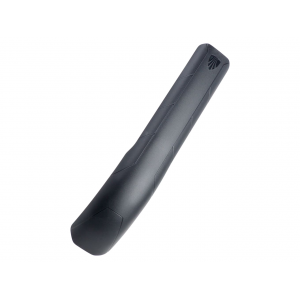
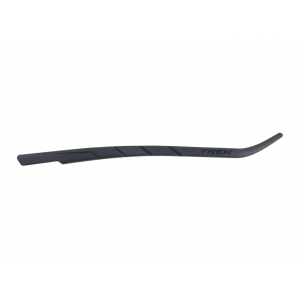
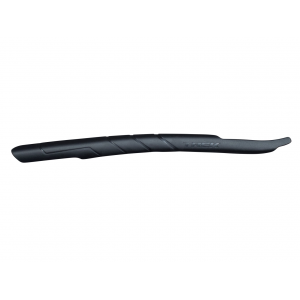





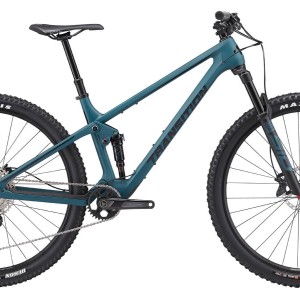

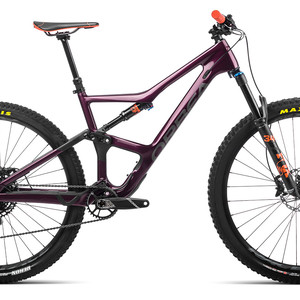


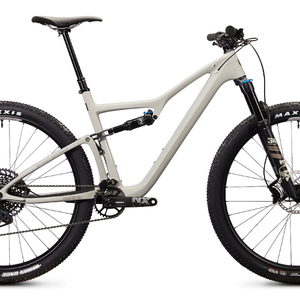










8 comments
Post a reply to: Tested: 2014 Trek Remedy 9 29